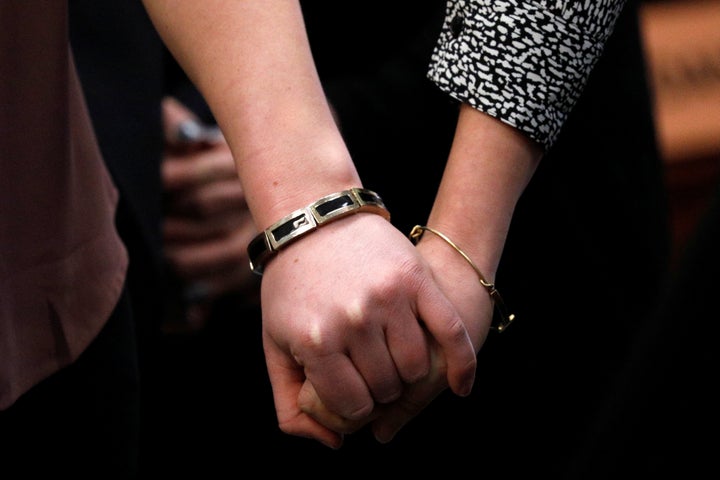
The first time I got a message from Larry Nassar, I felt honored. I was a college student just beginning what would eventually become a career writing about gymnastics. In the gym world, I was nobody. And the world-famous doctor for the U.S. women’s national gymnastics team wanted to talk to me?
Nassar was such a passionate fan of the sport. His job was to help gymnasts recover from injuries and to keep them healthy so they could go on to win medals at world championships and the Olympic Games, yet he was invested far beyond what his duties required. If someone fell and tore an Achilles tendon or dislocated a knee at one of the top-secret national team training camps, he’d let me know, along with his commentary. “No days off all week, it’s harsh,” he’d confide. “[National team coordinator] Martha Karolyi expects too much from them, and wonders why they’re all injured at Worlds.”
I am not a gymnast. Nassar never treated me, and every in-person exchange we shared was professional and friendly. I never wondered why he “chose” me to be his gossip buddy, but I loved all of the inside intel he gave me. And, like thousands of others, when I first heard about sexual abuse accusations against him, I thought, “Larry?! No way.”

Later, I realized why those thousands of us had the same response, including many girls and women who didn’t even realize that the “treatment” he performed on them was abuse. Nassar used his charm and his position as national team doctor to make everyone his gossip buddy, his special friend, his best pal ― so that when the world he built one day came crumbling down, he’d have an army of supporters defending him. Even after he was convicted for possession of child pornography, even after the number of alleged victims rose over 150, even after last week’s sickening and cathartic victim impact statements at his sentencing hearing in Michigan, some of them continue to defend him.
One of his supporters was Trinea Gonczar, a 37-year-old woman who met Nassar when she was 6. Nassar, who wasn’t yet a doctor when they met, “treated” Gonczar over 800 times, from her early childhood until she was an adult. But until a few weeks ago, Gonczar believed her “treatments” were legitimate, and that those who considered them abuse ― including some of her closest friends ― were “just confused.”
Though we now know that Nassar abused at least 4 of the 5 members of the 2012 Olympic team, and at least 3 of the 5 members of the 2016 team, most of Nassar’s victims weren’t Olympic-caliber gymnasts. For every Simone Biles, Aly Raisman and Gabby Douglas, there are dozens of women like Gonczar. Most of them grew up in the Lansing area. They were gymnasts or figure skaters or volleyball players, or were not athletes at all. They went to Michigan State University, or their parents were close with Nassar because they went to school together or lived on the same street.
One reason Nassar was so “successful” in abusing hundreds of women over three decades was because he used his personal relationships to build trust in the community, and to convince people that what he was doing was legitimate. And when someone did raise the alarm and report Nassar ― as softball player Tiffany Thomas Lopez did in 2000, as gymnast Rachael Denhollander did in 2004, and as MSU student Amanda Thomashow did in 2014 ― Nassar’s many friends were there to silence them.
When Thomashow spoke up, Nassar’s colleagues told the Title IX investigator looking into her complaint that Thomashow wasn’t familiar with osteopathic medicine and wouldn’t know the “nuanced difference” between a legitimate procedure and a sexual assault. Thomashow was a medical student at the time. Thomashow’s mother went to medical school with Nassar, and also sent her younger daughter, Jessica, who competed in gymnastics as a child, to see him for a rib injury when she was 9. Jessica Thomashow is now 17 and says Nassar abused her on multiple occasions.
The Thomashow sisters were 2 of 89 women who spoke out at Nassar’s sentencing hearing in Ingham County over a four-day period last week, a hearing that is expected to end Wednesday after almost 160 survivors will have addressed him and Judge Rosemarie Aquilina.

For all of these women and girls who spoke at the sentencing hearing, there are countless others behind them who weren’t abused themselves, but who were victims of Nassar’s manipulation. Among them were many parents who sat in Nassar’s exam rooms while, unbeknownst to them, he abused their daughters. “You made all of us parents unwilling accomplices,” Gonczar’s mother said to Nassar at the hearing. Gymnastics coach Tom Brennan, who once called Nassar his mentor, expressed his “unfathomable guilt” for referring hundreds of child athletes to Nassar.
As a doctor at Michigan State University, Nassar turned the city of Lansing into his personal playground, exploiting his status as “the Olympic doctor” to gain the trust and loyalty of an entire community. When USA Gymnastics allowed him to retire, rather than firing him after national team member Maggie Nichols made abuse allegations in 2015, Nassar wrote on Facebook that he was stepping down so he could focus on running for the school board in the town of Holt. By the time the election was held a year later, dozens of women had accused him of sexual abuse, and the Michigan attorney general and the FBI had opened investigations into his behavior. And yet Nassar managed to secure more than 20 percent of the vote.
Nassar’s legions of adult admirers and enablers worked hard to discredit those allegations. When 2000 Olympic gymnastics bronze medalist Jamie Dantzscher became the first to go public with her accusations, hundreds of people used social media to send their support to Nassar, and to call Dantzscher a liar. And in December 2016, when the FBI arrested Nassar on federal child pornography charges, his longtime friend Kathie Klages, then the head coach of the MSU women’s gymnastics program, pressured her gymnasts to sign a sympathy card saying they supported him.
One of these gymnasts was Lindsey Lemke, then a junior in her second season at MSU. In high school, Lemke trained at Twistars, the gym that employed Nassar as a visiting physician a few nights a week. Twistars is owned by a coach named John Geddert, and many of Nassar’s victims claim that Geddert knew about Nassar’s serial sexual abuse of children, with at least one describing him as the “Bonnie to Geddert’s Clyde.” Lemke was treated by Nassar for more than a decade, for various injuries, and believes that he deliberately kept her injured so he could continue his abuse. She retired from gymnastics this fall due to the same back issues Nassar failed ― or chose not ― to heal.
Lemke depended on Nassar, whom she considered the “good guy” on tough and intense days in the gym. This is a sentiment echoed by nearly every athlete who spoke at the sentencing hearing. As he was for me, he was their confidant. He listened to them, reassured them, gave them candy and gifts and healed their pain (or so they thought). Nassar was the Olympic doctor, the man Bela Karolyi handed the injured Kerri Strug to after her infamous vault injury at the 1996 games, the legend who only treated the best of the best. Parents and coaches were honored to send their kids to him because it meant their kids were special, and they trusted whatever he said or did without question.

Nassar will almost certainly spend the rest of his life in prison. This will be an incomplete serving of justice unless institutions like MSU and USA Gymnastics, which ignored and silenced victims who tried to come forward, are finally held accountable. Throughout the grueling sentencing hearing, I listened to dozens of parents, siblings, coaches, friends and teammates blame themselves for not knowing about or stopping the abuse their loved ones endured. I wondered how so many people could be so blind for so long. And then I remembered my own relationship with Nassar. I know that they, too, were under his spell.
He is a manipulator, a narcissist and a predator who created an army of admirers and confidants thousands strong. Each time Nassar was caught, every time a girl or a woman tried to speak out about his abuse, that army made excuses and went on the defensive, insisting that Larry was the last person in the world who would ever do something like that. For decades, it worked. But thanks to the persistence and bravery of the women who came forward and fought like hell to be heard, the power he had over so many is finally lifting.
It is not easy to believe that a man you once respected, or even loved, could ever hurt someone ― let alone be responsible for the worst sexual abuse system in the history of American sports. Making us respect and love him was part of his plan, which is why so many people chose to believe him over his victims, and worse, why so many people were willing to cover up and even enable him further, creating an environment and culture that allowed Nassar to thrive.
When most people hear about the Nassar case, they inevitably ask, “Why didn’t anyone speak up sooner?” As former Twistars gymnast Bailey Lorencen recalled in her statement on Monday, Nassar’s enablers shut down reports of abuse, and publicly called the first victims to come forward liars. “It took 37,000 pornographic images of children on his computer for people to believe that Nassar could do something like this,” Lorencen told the hearing. “And you wonder why nobody wanted to speak up?” They tried to, for decades. But no one was listening.
Lauren Hopkins is editor-in-chief for The Gymternet and has been writing about gymnastics since 2010. She is an Emmy Award-winning producer for NBC Olympics’ digital gymnastics coverage of the 2016 Olympic Games.
This piece is part of HuffPost’s brand-new Opinion section. For more information on how to pitch us an idea, go here.
Need help? Visit RAINN’s National Sexual Assault Online Hotline or the National Sexual Violence Resource Center’s website.
